How to Read P and S Waves
Generally speaking, there are 2 types of waves: trunk waves (which comprise of P or Primary waves and South or Secondary waves) and surface waves (Love and Rayleigh). But the long story is more complex — and much more interesting.
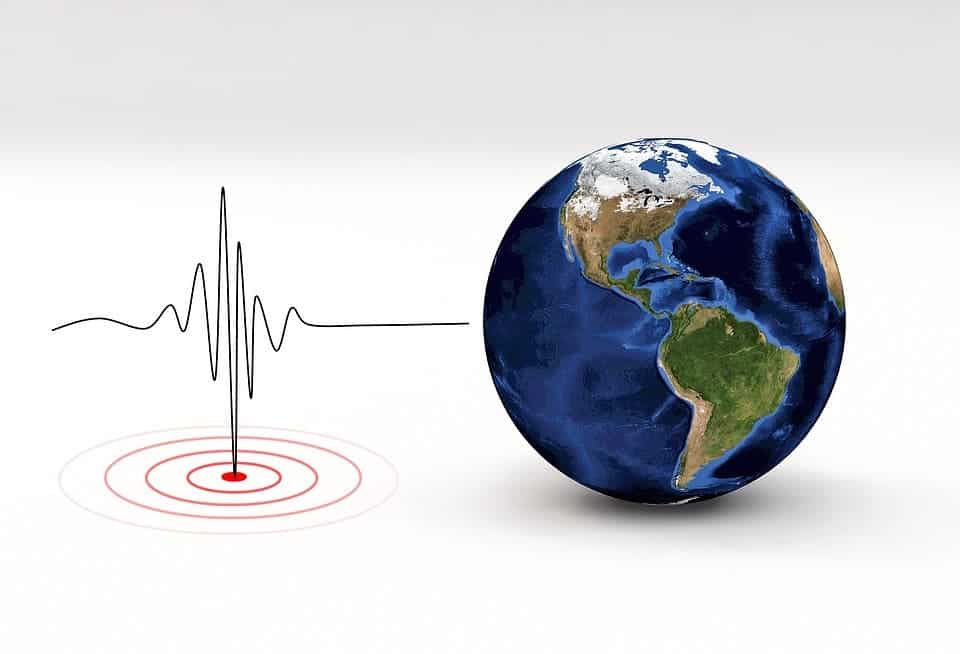
Seismic waves are produced past earthquakes, volcanic eruptions, magma motion, large landslides and large man-fabricated explosions. They are a form of audio-visual wave, just like audio waves. The vast majority of them are associated with natural earthquakes.
What'due south an earthquake, anyway?
In the broadest sense, an earthquake is just what the name suggests — whatever shaking of the Earth's interior. Earthquakes can happen for a variety of reasons, but by far the almost common cause is tectonic.
The World's chaff (the outermost layer) is divide into rigid plates, all of which are moving relative to each other. The movement produces more and more stress on the ground until something eventually breaks along what'south called a geological fault. This is why, if you overlay a global tectonic plate map and a global convulsion map, you lot'll see an well-nigh perfect overlap between tectonic edges and temblors.

Volcanoes can also produce earthquakes, though they are generally less impactful than tectonic earthquakes.
Man-made explosions (for case, atomic testing) tin also produce earthquake-type features which produce seismic waves and can be detected — this is what allows remote monitoring of nuclear explosions.
For some earthquakes, the cause remains poorly understood, particularly in the case of intraplate tectonics (within tectonic plates, not on the edges). Another cause of some very deep earthquakes is the so-called mineral phase change: atoms in minerals such every bit olivine can change their positions to become more than tightly packed. Their chemistry remains the same, merely their volume and density modify dramatically if an equilibrium is reached. This requires very particular weather condition to happen, but if it does happen, it creates a blazon of "anti-cleft" and tin generate massive, deep earthquakes.
Types of seismic waves
Seismologists like to split seismic waves into several categories, but the master types of seismic waves come in 2 categories — torso waves (which motion throughout entire bodies, such as the Globe), and surface waves )(which travel only on different surfaces, not through the whole body). The main types of seismic waves are the following:
- Main waves(P-waves).These are the "beginning" trunk waves — the ones that travel the fastest and through whatsoever type of medium (solid, liquid, gas). They propagate longitudinally on the propagation direction (call back of an accordion) and are harmless in terms of earthquake damage.

- Secondary (S-wave). These are shear waves, which make it afterward the P-waves. They're also body waves simply they but propagate through a solid medium. They too rarely do any significant harm.

- Surface waves — Rayleigh (R-wave). Surface waves (Rayleigh and Honey) do by far the most damage. As opposed to body waves (S and P waves), they propagate on the surface and carry the vast majority of the energy felt on the surface — in other words, these are what y'all feel when yous experience an earthquake. This happens because although they motion slower than trunk waves, their particle motility is much more than pronounced (see below). In the instance of Rayleigh waves, the motion is of a rolling nature, similar to an body of water surface wave.
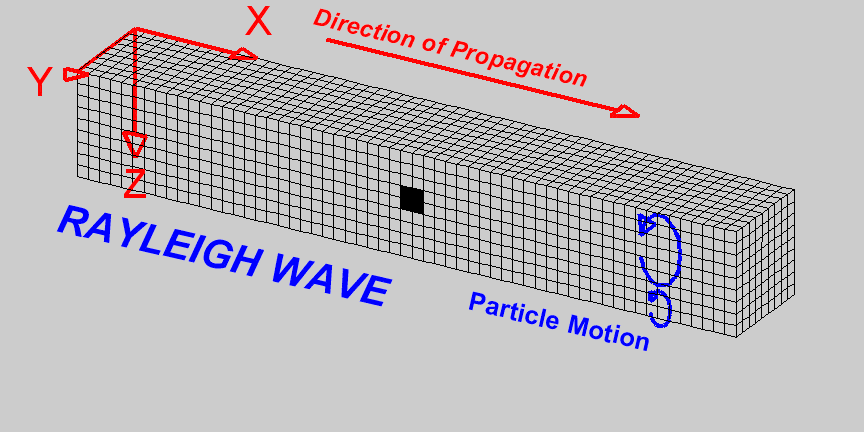
- Surface moving ridge — Dearest (L-wave). Reverse to their name, there'southward goose egg really lovable about the Honey waves — they were named thusly later on Augustus Edward Hough Honey, a Professor for Natural Philosophy at Oxford University who first described the movement of the waves named after him. Love waves have a transversal (perpendicular) movement and are the most destructive exterior the immediate area of the epicenter. Love waves tin can be devastating

Why seismic waves are of import
Studying and understanding seismic waves is more than a theoretical pursuit — information technology's very important for a number of reasons, which flow quite logically.
- Detecting epicenters
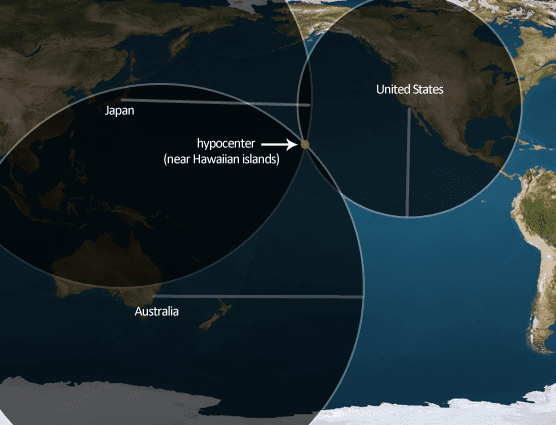
There are numerous seismographs effectually the world, all of which measure the earthquake (seismic) waves to some extent. Because the different waves have different speeds, by detecting the inflow times at in different regions in the world, the position of the earthquake can be detected — the so-chosen hypocenter. Contrary to popular belief, the epicenter is not the place where the convulsion ruptures (that'due south chosen the 'hypocenter'), but rather is the projection of the earthquake on the surface, which tin of course also be inferred from this information.
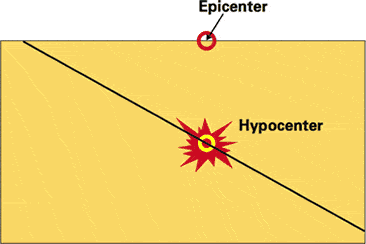

A historical map of epicenters gives a skillful starting betoken to appraise the likelihood of hereafter earthquakes and tin serve as a basic grooming, allowing city planners and residents to prepare for the likelihood of seismic events. Naturally, this leads to the next reason for studying seismic earthquakes.
- Assessing hazards
Assessing hazards basically aims to predict the potential ground shaking intensity from future earthquakes. This can't exist done from studying seismic waves lone, it requires a lot of local geology input and external considerations (for instance, earthquakes tin also cause indirect impairment though processes such equally landslides) — but seismology is the showtime step.
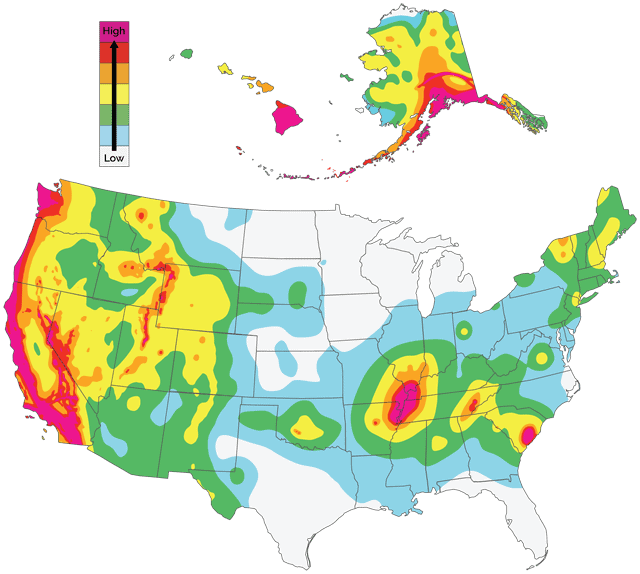
Precise earthquake prediction (pinpointing the exact fourth dimension and place of a future earthquake) is not possible and volition not be possible for the foreseeable future due to the sheer complication of the problem — just this doesn't mean that nosotros can't make some guesses. Scientists predict earthquakes in odds and intervals, not in exact values. A noteworthy situation is the interpretation of volcanic hazard: volcano eruptions are typically predicted by a swarm of small earthquakes, which is why nearly of the world's active volcanoes are surrounded by seismic detectors.
- Constructing better buildings
If you want to look for the best seismic engineers in the world, you'll probably find them in places similar Chile or Japan. Why? Because theyneedto be good, given that those are some of the seismically active places in the world.
Engineering seismology lays the bases for calculating seismic risk, and it makes a large difference — for instance, Japan'south sophisticated engineering and strongly-enforced building codes have probably saved thousands of lives. The western coast of the Usa, for instance, is also quite convulsion-prone due to the San Andreas mistake, and despite calls for better preparation, the area remains vulnerable.
- 30-second warning
If you live in an earthquake-decumbent area, you probably have admission to one blazon of "early" convulsion alert. Typically, these alerts tin let you know when the convulsion is coming thirty-lx seconds ahead of time — information technology'south not a lot, but in some cases, it could make all the difference.
In case you're wondering how this is done, it has everything to do with the velocity of dissimilar seismic waves: if you lot recall, P-waves travel much faster than surface waves, merely don't practice whatsoever real impairment — the "30 seconds" are the interval between the inflow of the P waves and that of the surface (Love and Rayleigh) waves.

- Detecting explosions
If you've ever wondered why nations can't just hide nuclear tests, it has a lot to practice with seismic waves.
Man-made explosions generate types of waves which can exist detected worldwide, and information technology's essentially incommunicable to hide any massive explosion from the entire earth (although seismic waves alone can't reveal the nuclear or non-nuclear nature of the explosion).
Studying the Globe with seismic waves
Another completely dissimilar reason why it makes a lot of sense to report seismic waves is to study the Earth's interior.
Since nosotros're kids, nosotros're taught that the World has a crust, a mantle, and a core… only how exercise we know that? The reply is, of form, through seismic waves.
Geologists use seismic waves to determine the depths and structures of different Earth layers. For instance, P waves travel through all types of medium, whereas S waves only travel through solid waves — this was used to deduct the fact that the mantle acts every bit a fluid (information technology's non really a liquid, but information technology'southward not exactly a solid either — think of it as extremely thick honey).
Seismic waves too get reflected and refracted when they travel from 1 medium to another. These transitions are governed past differences in density, which is why we know so much nigh the density of many structures deep within the Earth. An interesting consequence of this belongings is that earthquakes have a "bullheaded spot": an surface area of the world where waves coming from them can't be detected.
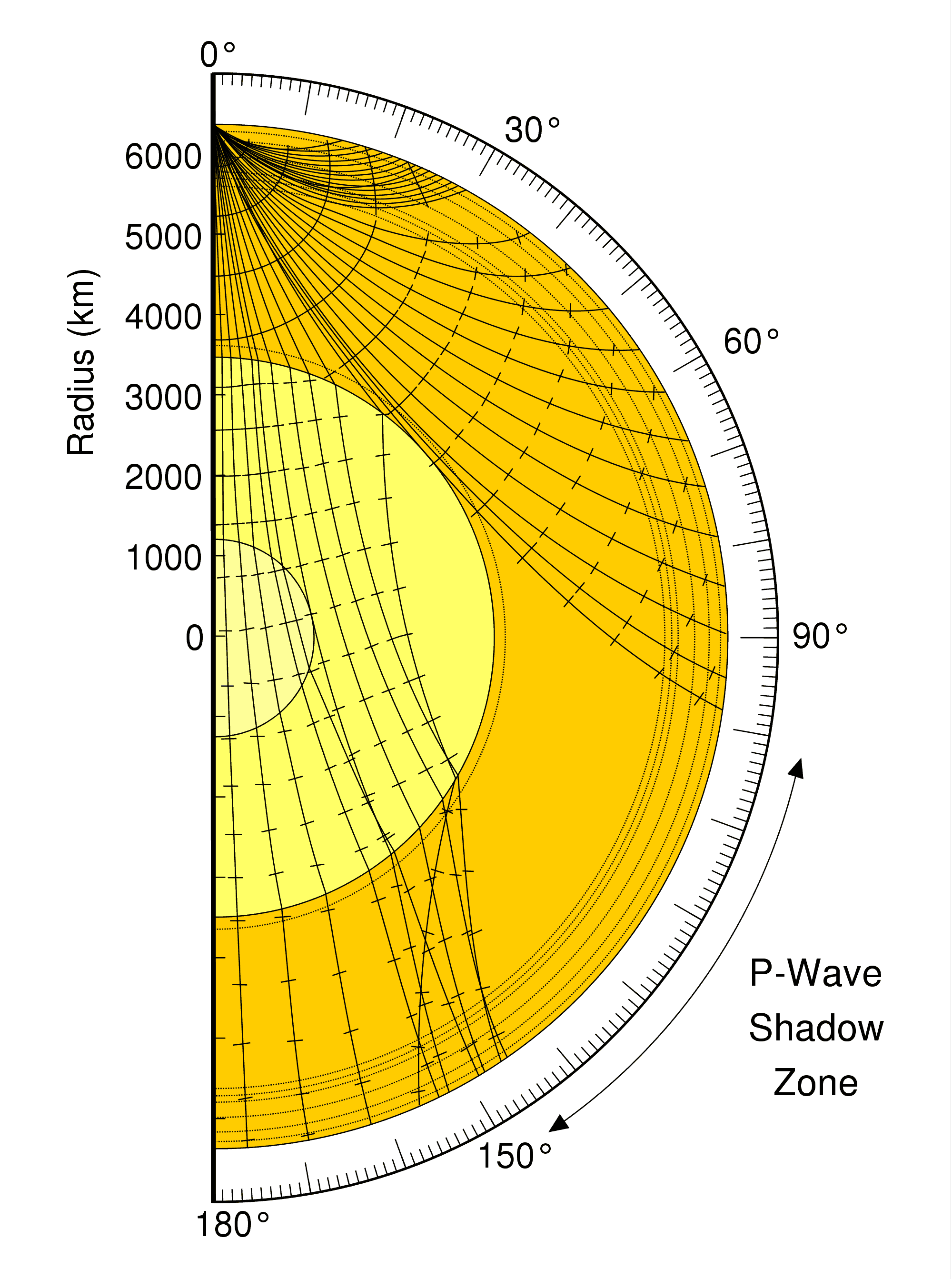
Much of what we know about the planet's tectonics, the World's deep structure, and even some features closer to the surface hinges on our understanding of seismic waves.
Prospecting
A few decades ago, people realized that they tin mimic natural seismic waves through explosions or specialized machinery — at a much smaller calibration. Similarly to how convulsion waves can reveal a lot nearly the subsurface at a big scale, these homo-made waves are used to infer properties of at a smaller scale.
This is widely used as a prospection tool, particularly for oil and gas reservoirs, merely to a smaller extent, also for mineral resources, water, and even ecology studies.
Other types of seismic waves
If y'all've fabricated information technology this far — first of all, congrats — yous might exist looking for a more detailed nomenclature of seismic waves. Seismologists manifestly dear to draw up moving ridge categories, not necessarily depicting unlike types of waves only rather describing where those waves accept passed through. So while primary, secondary, Rayleigh, and Love waves are abbreviated by P, S, R, and L respectively, they can gain additional notations. For instance, a mnotation indicates that the wave only travels through the crust, without any ocean floor in its path. Conversely, a due west indicates that the moving ridge traveled or bounced on the ocean flooring.
Going deeper, a J moving ridge is an Southward wave in the outer core, while a K moving ridge is a P-wave in the outer core. A c indicates that the moving ridge reflects off the outer core, while an i indicates that it bounces off the inner cadre.

In theory, there are an infinite of paths for waves to take — although in practice, their energy decays as the travel through the Earth. However, they can withal reach an impressive number of bounces, and the notations add upwardly. So you tin can end up with moving ridge names such as PKiKPor SKS.
Source: https://www.zmescience.com/other/feature-post/the-types-of-seismic-waves/
0 Response to "How to Read P and S Waves"
Post a Comment